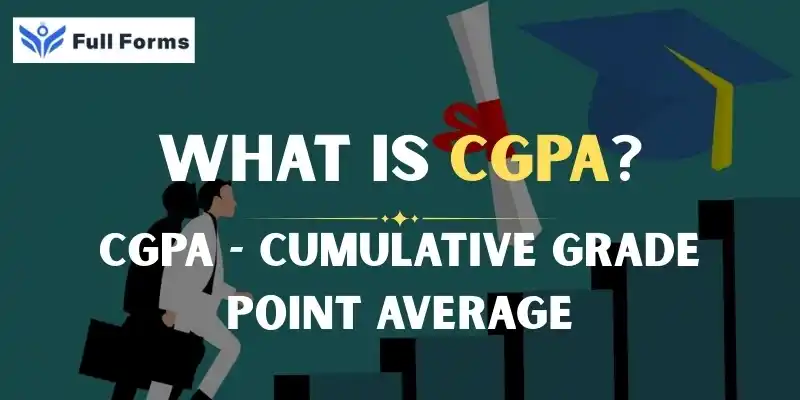Cumulative Grade Point Average
(CGPA)

Description
Cumulative Grade Point Average (CGPA): A New Way to Look at Academic Performance
Student performance assessment for non-grading purposes is very important in the education sector. It is also very important in college admission, career planning, and self-appraisal. The most popular method which is standardized for this purpose is known as the Cumulative Grade Point Average (CGPA). Around the globe, CGPA has taken over from the traditional percentage-based systems as the main method of student grading in many schools, colleges, and universities.
What does CGPA stand for students, how to calculate and what does it represent?
A student's cumulative grade point average (CGPA) is a figure that indicates how well they performed across all of their classes or subjects within a particular academic program. It is calculated by dividing the total number of grade points obtained in each subject or semester by the total number of subjects or semesters.
Compared to percentage systems that solely consider marks, CGPA is a more flexible and balanced method of grading. It takes into account the credit value of each subject and normalizes performance over time.
How do you figure out CGPA?
The way CGPA is calculated may be a little different depending on the board, university, or country, but the basic idea stays the same. Here's a simpler version:
Step 1: Give out grade points A grade is given to each subject based on the marks they got (for example, A, B, C), and each grade is linked to a number of grade points (for example, A = 10, B = 8).
Step 2: Multiply the number of credits by the number of grade points. A lot of the time, subjects have different credit weights. To figure out how well someone is doing, multiply the grade point for each subject by the number of credits the subject has.
Step 3: Add and split Add up all the grade points that are weighted and divide by the total number of credits earned.
The CGPA formula is:
CGPA = The total of (Grade Points × Subject Credits)
All Credits Taken
CGPA for Different School Boards
The Central Board of Secondary Education (CBSE) in India uses CGPA for its Class 10 board results. The CGPA is usually figured out like this:
CGPA = the total of all the grade points in all subjects
How Many Subjects
CGPA = Number of Subjects
Total of Grade Points in All Subjects
Using the formula below, students can also change their CGPA into a percentage:
Percentage = CGPA × 9.5
Colleges and universities
A credit-based CGPA system is used by most colleges and universities in India and other countries, especially in engineering, science, and management.
1. Standardized Evaluation is one of the benefits of using CGPA.
CGPA makes things the same across schools, which makes it easy to compare academic records. It makes differences in grading schemes less noticeable.
2. Less Pressure
CGPA is an average, so it takes the focus off of individual high-stakes tests and rewards consistent performance over time.
3. Helps people learn more
Students are graded not only on their final exams but also on their assignments, presentations, and projects. This encourages learning in a more complete way.
4. Accepted in any country
A number of universities and employers across the globe accept CGPA, making it easy for the students to apply to schools or take tests anywhere in the world.
Limits of CGPA
While being a useful commonly understood measure, CGPA is not without its limitations:
Not precise: Instead of providing a sleuth of precise marks, CGPA rounds off marks into grade points and this in turn sometimes under-represents the real performance.
No difference in the close scores: A pair of pupils can obtain 89% and 91%, yet it is the same grade.
Subject Bias: Sometimes, subjects that give you a lot of credit can unfairly lower your overall CGPA.
Even with these issues, CGPA is still a better system for students than percentage models that can't be changed.
How to Improve Your CGPA
Here are some good ways for students to raise their CGPA:
Consistent Effort: It's important to keep up with your schoolwork because CGPA is based on more than one semester or year.
Pay attention to subjects that give you a lot of credit: It's a good idea to do well in these subjects because they have a bigger effect on your CGPA.
Time management: You will do better in school if you do both your schoolwork and activities outside of school.
Get help right away; don't wait until you're behind. If you're having trouble with a subject, don't wait to ask your teachers or classmates for help.
CGPA, GPA, and Percent
People often use CGPA and GPA (Grade Point Average) to mean the same thing, but there is a small difference:
GPA stands for "grade point average" for one semester or term.
CGPA: This is the sum of all the grade points earned in all semesters of a program.
Percentage: Shows grades out of 100 and is still used in many Indian schools.
It's very important to know what these words mean when you apply to colleges or jobs, especially if they are in another country.
Conclusion
More than just a figure, the Cumulative Grade Point Average (CGPA) illustrates how a student's grades have evolved over time. A cumulative grade point average would ensure a smooth, stress-free, and equitable transition to the more comprehensive model of the system by continued performance, balanced evaluation, and assessment friendly to the learners.
Every end user needs to be an informed decision maker setting realistic targets, for example, teachers explaining grades operation, parents gauging the performance of their child, or examination candidates.
The CGPA of a student says a lot about their potential, hard work, and dedication in a world where often statistics do the talking.
